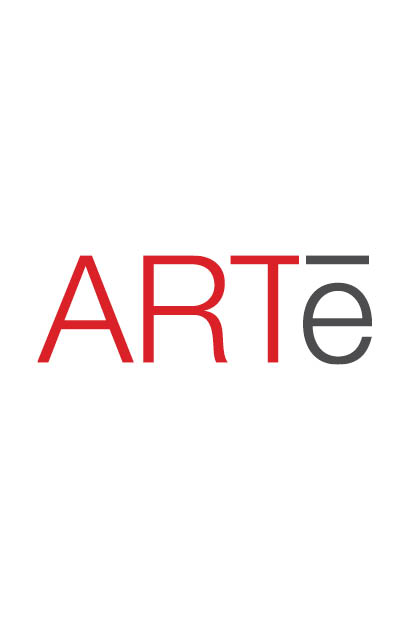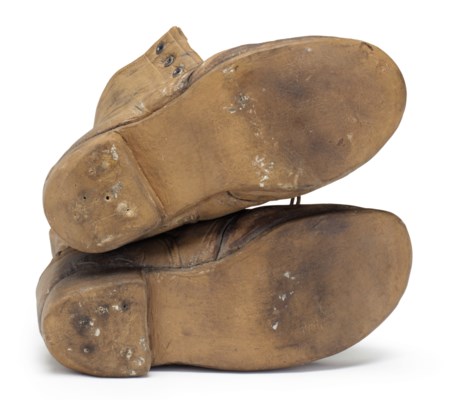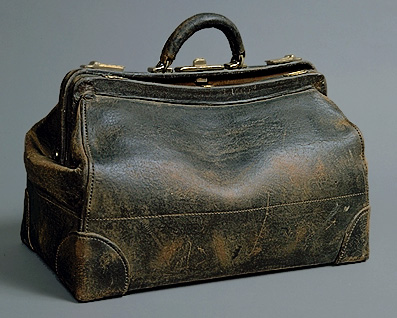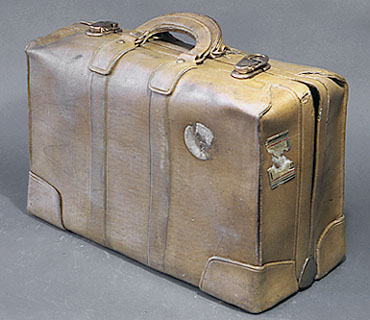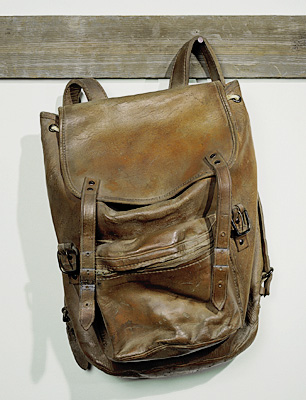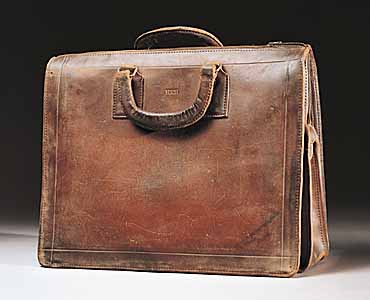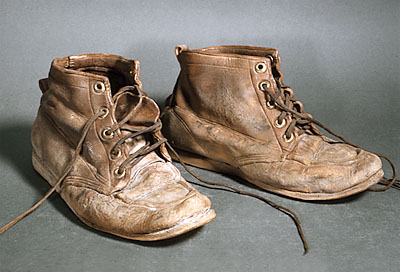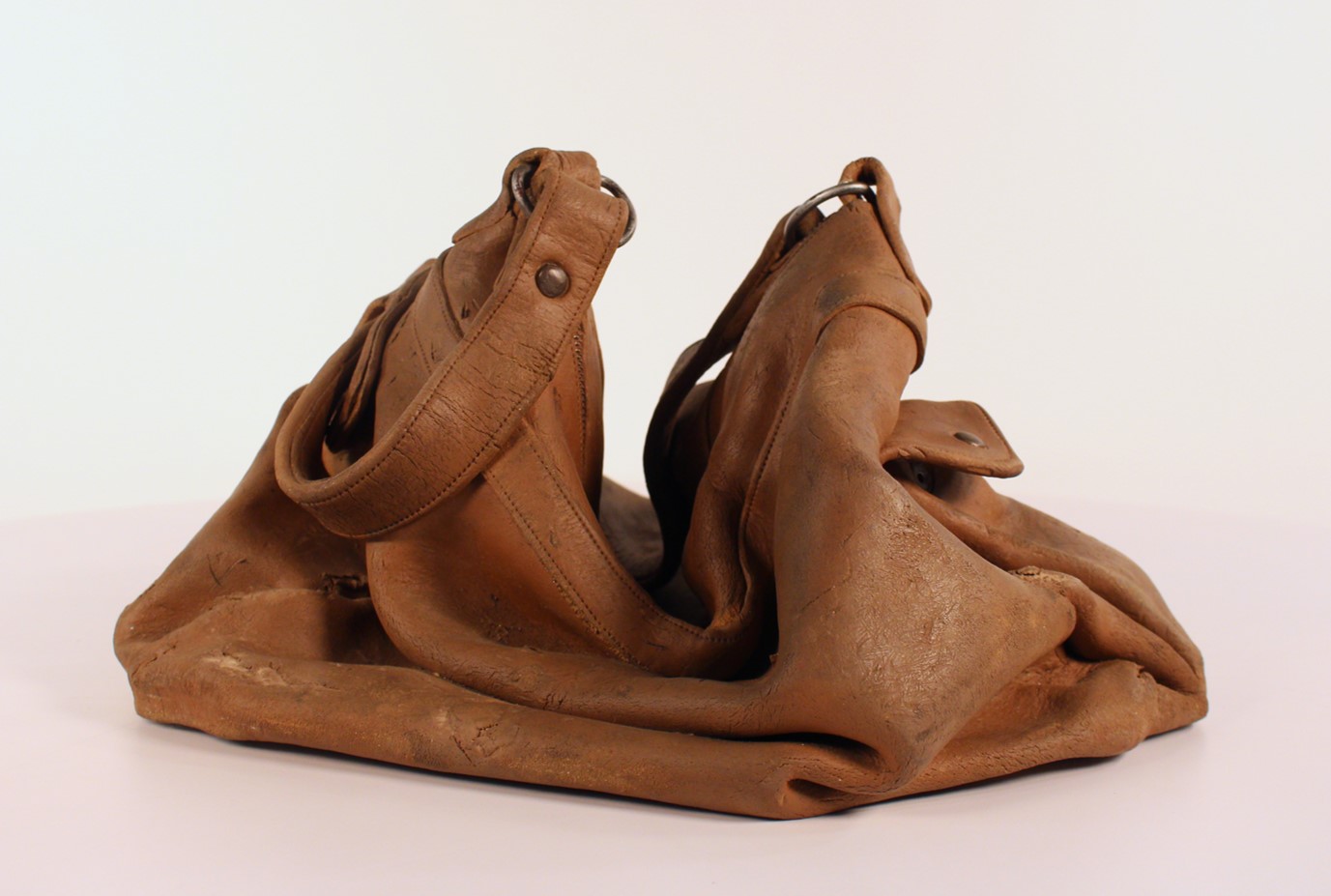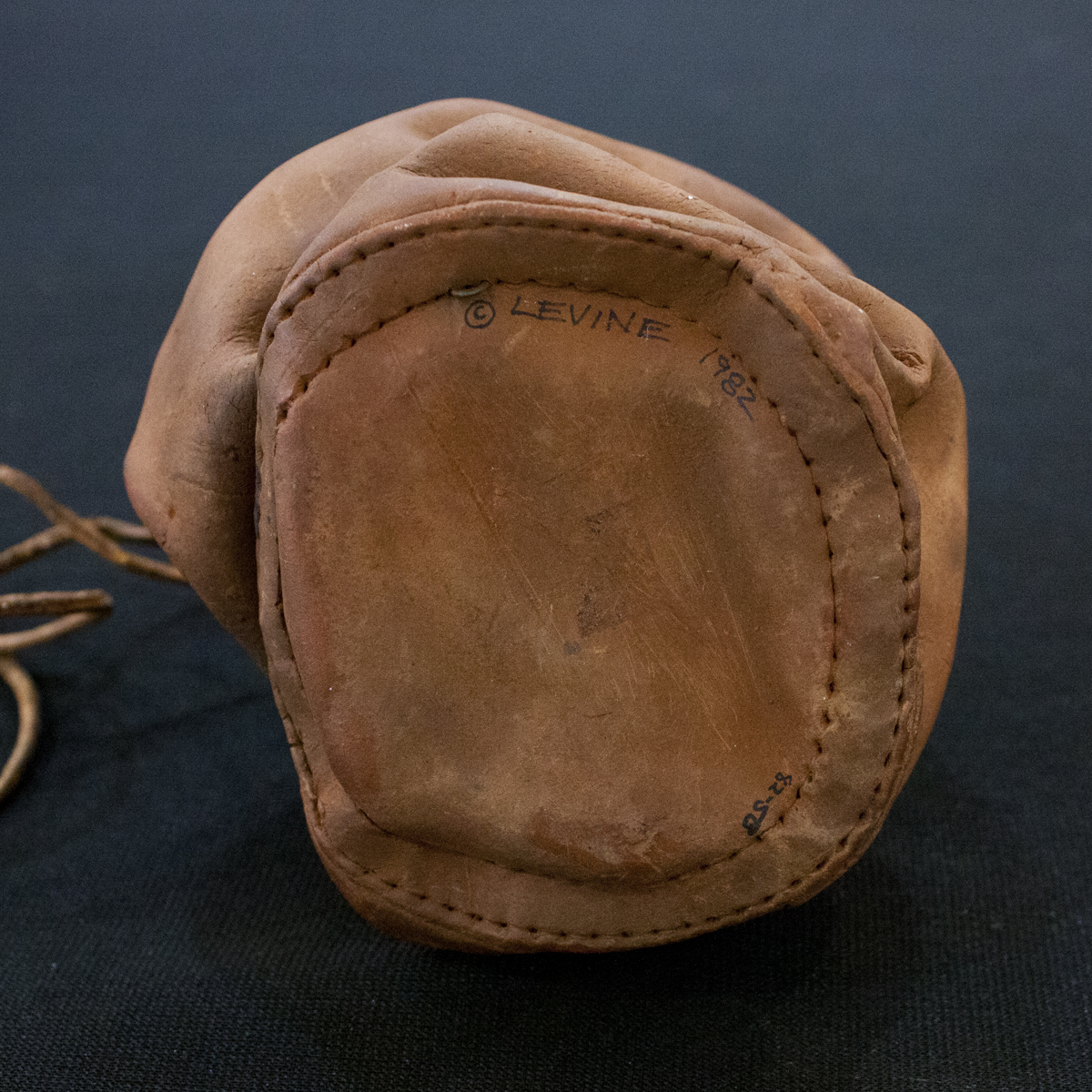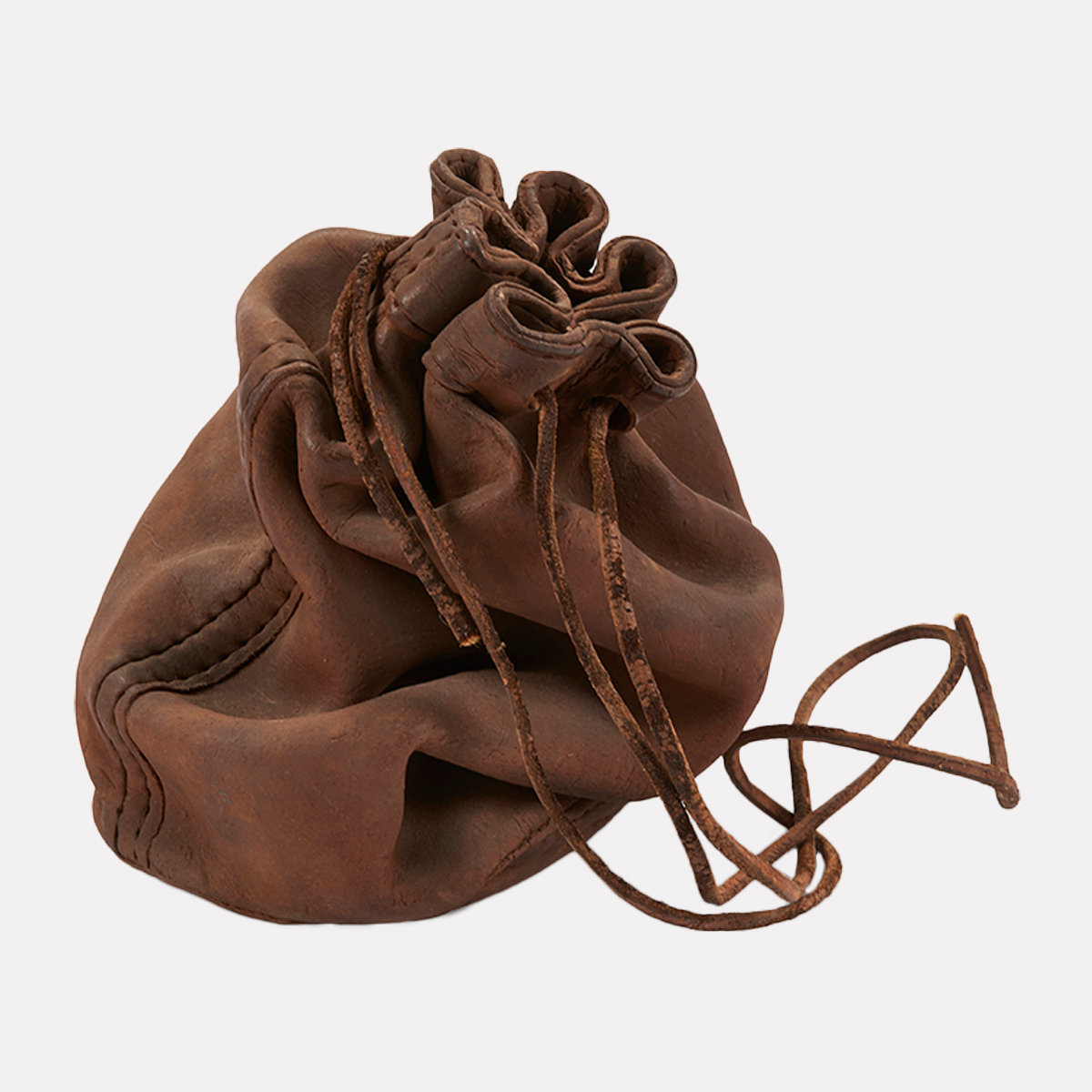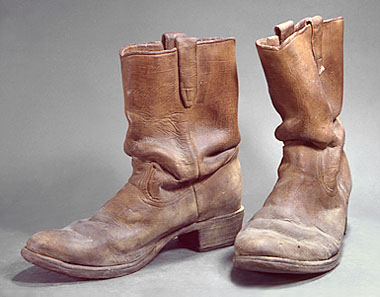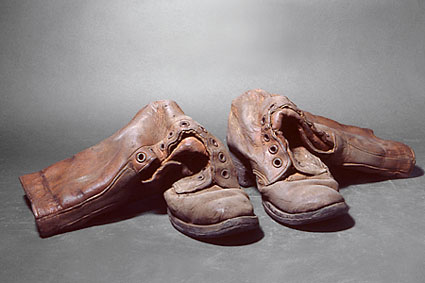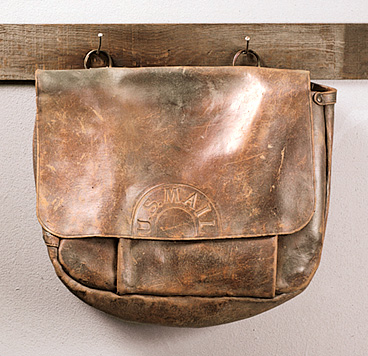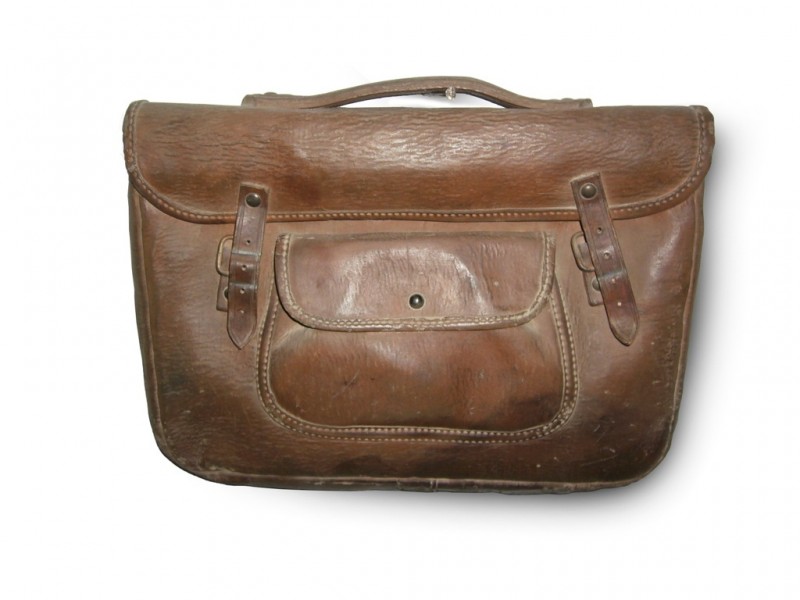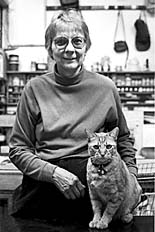Marilyn Levine • American: 1935-2005
Black Shoe Bag • Earthenware with Real Zipper 6-1/2” x 13-1/2” x 6-1/2"”
Marilyn Levine wanted you to think about other people’s lives. She wanted your mind to wander over imagined events and feelings. The tool she chose to kick-start your imagination was clay. Or rather it was clay expertly manipulated, stained and fired to look like leather. From the time she left her native western Canada and migrated to Oakland, California, Marilyn Levine did little else but create clay sculptures made to look like leather or canvas. She saw old leather objects as metaphors for the passage of time and the scars of life, so used her tools and kiln the way a storyteller uses paper and pictures.
Once a New York ceramics dealer told people her work fit neatly into the super-realist movement in painting and sculpture. Levine thought he missed the mark completely. “I don’t think of myself belonging to any group. I think what I do is probably related to the kind of isolated childhood I had.” Levine made hyper-realistic clay sculptures because she didn’t want people thinking about her. Rather she wanted people to think about someone else they could never really know. A man whose shoes were kept in an old zippered leather bag. A boy who left his leather jacket carelessly hung on a wooden peg. A worker who’d worn holes in the toes of his work boots. Marilyn Levine wanted us to ask what their lives were like at a particular moment in time.
(story continues below break)






